Day of Military Glory of Russia - Victory Day of the Russian squadron at Cape Sinop
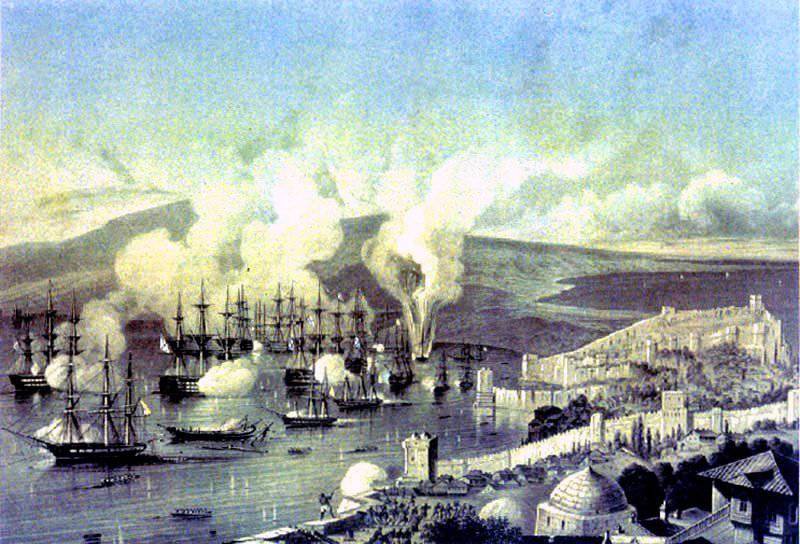
"Truly Russian courage" of the Black Sea sailors in the Battle of Sinop
18 (30) November 1853, the Battle of Sinop took place, in which the Russian Black Sea Fleet, commanded by Admiral Pavel Stepanovich Nakhimov, destroyed the Turkish fleet for several hours. This was the first major battle of the Crimean War.
It should be noted that the situation in the Black Sea basin has become significantly complicated since May 1853, when there was a break in diplomatic relations between Russia and the Ottoman Empire. Russian forces were brought into the Danube principalities (Moldavia and Wallachia), the Anglo-French fleet arrived at the Dardanelles. In late September, Port demanded that St. Petersburg withdraw its troops from the territories of the Danube principalities, but before the end of the term of the ultimatum, it declared war on the Russian Empire. The Turks were confident in their abilities, since France and Britain stood behind them.
October 11 (23), the Russian Danube detachment flotilla was shelled from the side of Isakcha fortress. On the night of the 16th, Turkish forces attacked the Russian garrison of the post of St. Nicholas on the Black Sea coast, it was located between Poti and Batum. On October 21, Turkish forces crossed the Danube and created a bridgehead for a strike against the Russian army. So began the next Russian-Turkish war.
Black Sea
In the plans of the Turkish command, a large role was assigned to the Caucasus and the actions of the Turkish army in support of the Turkish fleet from the sea. In Batumi, 20, a thousand Turkish corps, and a large flotilla of coastal vessels (up to 250) were concentrated to transport troops by sea. They planned to land the troops in the area of Sukhumi, Poti, Gagra, Sochi, Tuapse.
To cover the assault, a squadron of the best ships under the command of Vice-Admiral Osman-Pasha was formed, Rear Admiral Hussein Pasha became the second flagship. When the squadron was a British adviser - Captain A. Slade, in the Turkish fleet, he was promoted to rear admiral. The squadron consisted of 7 frigates and 5 corvettes. To increase its reconnaissance capabilities, she was given a detachment of steam-frigates from 3, under the command of Vice Admiral Mustafa Pasha. The Anglo-French fleet at this time passed from the Dardanelles to the Bosphorus.
From 5 to 6 in November 1853 of the year in 12 miles from Cape Pitsunda, the frigate “Flora” marching under the command of young captain-lieutenant Skorobogatov was attacked by three Turkish steamboat-frigates under the command of Admiral Mustafa Pasha. The battle went from 2 hours of the night to 9 hours of the morning, as a result, the Turkish squad was defeated and retreated. The Turkish command, along with the British, could not take advantage of the speed, strength, and armament. Although the Turkish steamboat frigates were large-caliber bombing guns, which could fire, being outside the reach of the Russian ship. The Russian captain showed cold-blooded reasoning and courage, and his team knowledge of his business. This was the only case in the marine storieswhen one sailing ship was able to defeat three steam.
Black Sea Fleet Actions
The squadron of Vice-Admiral Nakhimov (84-gun battleships "Empress Maria", "Chesma", "Rostislav") and a detachment of steamships under the command of the fleet chief of Vice-Admiral Vladimir Alekseevich Kornilov were sent by prince Menshikov to cruise to the shores Anatol Vladimir Alekseevich Kornilov to coast to the shores Anatol Vladimir Alekseevich Kornilov. reconnaissance and search of the Turkish naval forces.
After a week of searching in the western region of the Black Sea and at the Bosporus, Kornilov decided to return to Sevastopol. 5 (17) on November, the steamer-frigate "Vladimir" was holding the flag of Kornilov on it, and the commander of the ship was G. I. Butakov, in the area of the Turkish port of Penderakli, the Turkish ship Pervaz-Bahri was spotted. There was the first in the history of the battle of steam ships. After a two-hour fight, the Turks lowered the flag. As a result of the march to the Bosporus, Kornilov found out that the Turks were preparing a squadron for the march, which should cover the landing in Sukhumi and Poti. He reported this to Nakhimov.
At that time, a squadron of Nakhimov was cruising off the coast of Anatolia, where the main maritime communications connecting Istanbul with Batum took place. For more than a month the Russian ships were in a campaign, which proceeded under conditions of severe autumn weather, constantly waiting for a meeting with the Turkish fleet and a possible attack by the British fleet. 3 November Nakhimov announced an order for the fleet, in which he reported that the Turkish fleet went to sea: "The enemy can not fulfill his intention otherwise, like passing by us or giving us a battle ... I hope to accept the battle with honor."
November 8 1853 squadron Nakhimov discovered an enemy squadron of 16 combat and auxiliary vessels on the roads of the Turkish port of Sinop. The Turkish squadron was armed with 476 guns, plus 44 guns on the coastal 6 batteries, they were equated to several ship guns, since they were more powerful. Nakhimov had three linear sailing ships with 252 guns, i.e., his forces were initially weaker than Turkish, but the Russian admiral decided to block the enemy in Sinop until reinforcements from Sevastopol arrived. Moreover, Nakhimov was ready to join the battle if the Turks go for a breakthrough. He wrote in one of the orders that if he met an enemy that exceeded the Russian squadron in strength, he would attack him, “being absolutely sure that each of us will do his own thing ...”.
The Turkish command, despite the superiority in strength, did not dare to join the battle or to break the blockade. A report on the blockade was sent to Istanbul, hoping for help from the Anglo-French forces, and the Russian forces were exaggerated three times.
November 16 (28) November, a squadron of Admiral Fyodor Mikhailovich Novosilsky arrived in Sinop, consisting of three 120-gun battleships (Paris, Grand Prince Constantine and Three Saints) and 2 frigates (44-gun Kagul and XI - gun "Kulevchi"). As a result, his strength, including the three ships, increased to 54 guns. Nakhimov decided to attack himself.
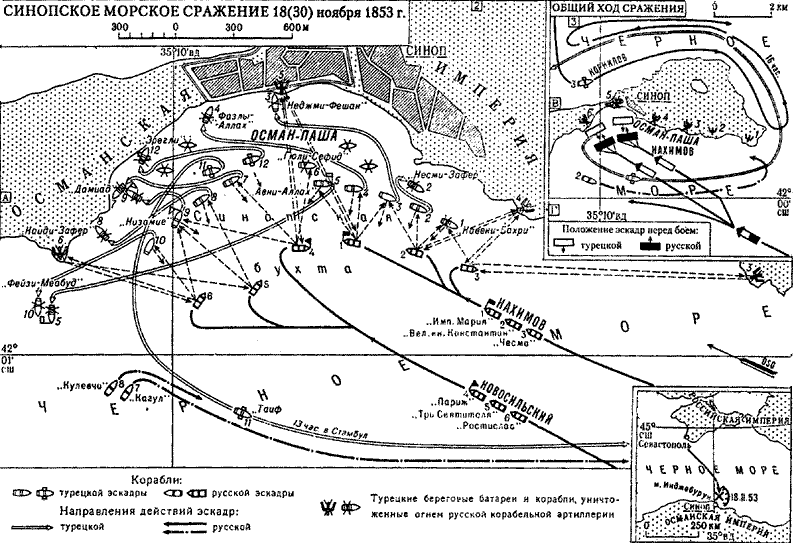
Nakhimov's plan
The idea of Nakhimov, this great Russian naval commander, was imbued with determination and initiative. According to his plan, the ships in the ranks of two wake columns (the line of ships when following one after the other along the course line) were to break through to the enemy raid and attack the ships and batteries of the enemy. This system was supposed to reduce the time of passage of ships under the fire of an enemy squadron and land batteries. In addition, facilitated the deployment of the Russian squadron in order of battle when anchored. The frigates were in the rearguard, blocking possible attempts to escape the enemy ships.
The admiral has carefully developed the position of the squadron during the battle, gave clear instructions on the preparation for the battle, the location of each ship, its purpose. At the same time, the commander was confident of the high skill of the repaired commanders, ordinary sailors, and artillerymen, so there was no strict regulation. Nakhimov always encouraged personnel on the initiative, independence.
Battle
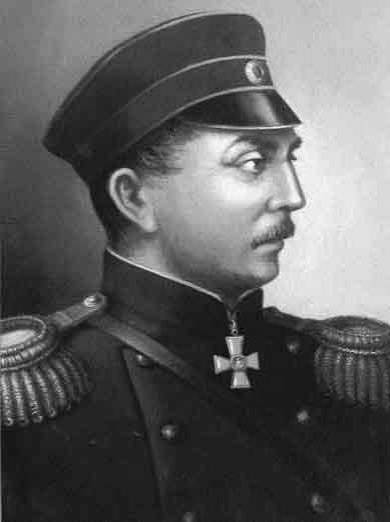 The ships sent the last call of Admiral P. S. Nakhimov: “Russia expects glorious feats from the Black Sea Fleet; it is up to us to live up to expectations. ” 18 (30) November 1853, 9.30 of the morning squadron headed for the Turkish raid. The flagship linear 84-gun ship "Empress Maria" headed the right column. At the head of the left was "Paris" under the flag of Rear Admiral F, M. Novosilsky (the commander of the battleship was V. I. Istomin).
The ships sent the last call of Admiral P. S. Nakhimov: “Russia expects glorious feats from the Black Sea Fleet; it is up to us to live up to expectations. ” 18 (30) November 1853, 9.30 of the morning squadron headed for the Turkish raid. The flagship linear 84-gun ship "Empress Maria" headed the right column. At the head of the left was "Paris" under the flag of Rear Admiral F, M. Novosilsky (the commander of the battleship was V. I. Istomin). Turkish ships were starboard at a minimum distance from the coast. Noticing the movement of the Russian squadron, the Turks began frantically preparing for battle. In 12 hours of 28 minutes of the day, 1-th shot from the 44-cannon flagship frigate "Aunni Allah" was fired from all Turkish ships and batteries. Russian ships came under heavy fire. The Turks hoped that when they came under heavy fire from the coastal and naval artillery, the Russian squadron would not be able to break through at close range and retreat.
But the Russian ships continued to confidently go to the Turkish squadron. Nakhimov, knowing the techniques of the Turkish commanders, foresaw that the enemy fire would be concentrated on the mast (this is a combination of the above-deck parts of the ship equipment), and not along the decks. Thus, the Turks wanted to bring a large number of Russian sailors at a time when they would remove the sails before setting the ships to anchor and break the controllability of the ships during movement. And so it happened, the Turkish cores blew the sails, broke yards, and ridges. But the sailors were at the bottom, Nakhimov ordered to anchor the ships without removing the sails.
The squadron’s flagship received the most damage; it received the main fire of the enemy, the flagship lost most of its mast. But, despite the damage (after the battle 60 was counted in the holes in the board), the Russian flagship continued to move and began to approach the Admiral frigate Aunni Allah. Approaching a distance of about 400 meters, the "Empress Maria" anchored, followed by other ships. The Russian squadron executed the first part of the plan - it broke through under the fire of the enemy on the Sinop raid.
The battle began between the two squadrons. Russian ships hit the enemy to 200 shells per minute. A great role was played by coordinated, clear actions of the Russian commanders. The Turks also now beat on the gun decks, and after several volleys they were shot.
“The Empress Maria” concentrated the fire on “Aunni Allah”, the Russian sailors skillfully acted under the fire not only of the enemy flagship, but also other ships, batteries, which supported their flagship frigate. Nakhimov noted the “personal courage and orderliness” of Lieutenants P. Prokofiev and D. Butakov. Half an hour later, the enemy frigate, unable to withstand Russian fire, rushed to the shore. The Turkish squadron has lost the main leadership and command center. After that, the Russian flagship concentrated fire on another Turkish frigate, the Fazli-Allah, which soon caught fire and also rushed ashore. After that, "Maria" began to fire on the battery number XXUMX.
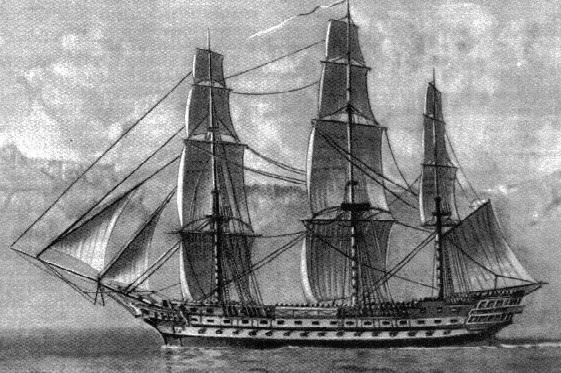
Battleship "Empress Maria"
The linear 120 gun ship “Grand Duke Konstantin” (he was under the command of the captain of the 2 rank L. A. Ergomyshev), anchored, fired at the Navek-Bahri frigate (60 guns) and the battery No. XXNX. After 4 minutes of battle, the enemy frigate exploded - one of the Russian shells hit the gunpowder cellar. After that, "Constantine" concentrated fire on the frigate "Nesimi-Zefer" (20 cannons) and the corvette "Nedzhmi-Feshan" (60 cannons), both enemy ships were forced to throw ashore.
Linear 84-gun ship "Chesma" fought against two Turkish batteries that supported the left flank of the Turkish squadron - №4 and №3. With each volley of the ship, the destruction of the Turkish positions increased. Soon both batteries were put down.
The flagship of the second Russian column, and she opposed the right flank of the Turkish squadron - 120-gun "Paris" was fighting with the frigate "Damiad" (56 guns), the corvette "Guli-Sefid" (22 guns) and the central coastal battery - №5. After the corvette caught fire, and then exploded, when the fire reached the powder cellar, the efforts of the Russian commanders were concentrated on the frigate Damiad, he could not stand the strong fire, the crew chopped off the anchor cable and the ship dropped ashore. "Paris" opened fire on the 62-gun frigate "Nizamiye", Admiral Hussein Pasha was holding the flag on it (it was the most powerful frigate of the enemy fleet). Soon the frigate lost two masts - fok- and mizzen-mast, caught fire, it was carried to the shore. The battleship commander Istomin showed "fearlessness and firmness of spirit", made "prudent, skillful and quick orders." After this, the ship put down a strong central battery of the enemy, which provided great resistance to the squadron. As Nakhimov wrote: “It was impossible to stop looking at the beautiful and coolly calculated actions of the ship Paris.
The teams of other ships acted in the same selfless way. The linear 120-gun ship "Three Prelates" entered into battle with the frigates "Qaedi-Zefer" (54 guns) and "Nizamiye". When the enemy's line was interrupted by an anchor cable and the ship began to roll down the stern to the enemy, but midshipman Varnitsky was able to repair the damage. The Three Saints underwent a heavy bombardment from the side of the battery No. XXUMX, its mast badly damaged. This was noticed by the commander of the 6-gun "Rostislav" captain 84-rank A. D. Kuznetsov, he transferred the fire of the ship to this battery. The fire of two battleships she was suppressed. "Rostislav" also forced the corvette "Feise-Meabud" (1-gun) to be thrown ashore.
It should be noted that the Turkish commanders did not differ heroism. In the midst of the battle, Yahya Bey on the 22-cannon ship-frigate "Taif" withdrew from the anchor and fled to Istanbul, the Russian frigates could not pursue him because of the difference in speed. The commander of the ship “Erekli” - Ismail Bey, the commander of the corvette “Feise Meabud” - Itset-Bey, etc., escaped from the ship during the battle.
Battle results
During the three-hour battle, the Turkish squadron ceased to exist - from the squadron to the 16 pennants, 15 was destroyed, the remaining coastal fortifications and batteries were suppressed a little later. The Russian squadron did not lose a single ship. More than 3 thousand Turks were killed and injured. An 200 man was taken prisoner along with the commander Osman Pasha. Our losses - 37 killed, 233 injured.
The complete defeat of the Turkish squadron had a great influence on the military-strategic situation on the Black Sea. The naval force of the Ottoman Empire was greatly weakened. The Turkish ground forces on the Danube and the Russian-Turkish border in the Caucasus were deprived of the support of the fleet. The Black Sea Fleet could now unhindered support the maritime flanks of the Russian armies on the Caucasian and Danube fronts. If it were not for the intervention of the war between Britain and France, then the Turks would hardly have lasted a long time.
The defeat of the Turkish squadron was of great importance for the situation in the Caucasus. Nakhimov struck a powerful blow to the plans of Porta and its allies on the landing of troops on the Caucasian coast of the Black Sea.
Sinop battle again showed the world the heroism, courage, courage of Russian sailors. So Nakhimov wrote that the Black Sea sailors showed "true Russian courage." In this naval battle, the results of the advanced training and education system for seafarers and commanders of the Russian Black Sea Fleet, led by the best Russian naval commanders, clearly showed themselves. High combat skills, which showed the sailors in the Battle of Sinop, was achieved by hard training, study, sea trips. Sinop "exam" proved the highest combat readiness of the sailors and commanders of the Black Sea Fleet. The high skill level was shown by Russian naval gunners, during the battle they fired more than 18 thousand shells at the enemy. The highest rate of fire was shown by the rostislav’s gunners, from each gun of the operating side shots were fired on 75-100. On other ships, 30-70 shots were fired with every weapon on the active side.
The battle of Sinop demonstrated the importance of bomb bombers for the future development of the Navy. The battle showed the great vulnerability of wooden ships to the fire of such guns. It became obvious that it was necessary to strengthen the armor protection of ships.
This battle showed the highest skill of the Russian admiral Pavel Stepanovich Nakhimov, who correctly took into account his forces and forces of the enemy, worked out the battle plan in detail, showed perseverance in achieving the goal. I was able to skillfully build a squadron to break into the raid and to fight, to organize the interaction between the ships. He managed to save the lives of crews, it proves the absence of dead ships and the relatively low human losses of the Russian squadron.
Sinop battle was the result, a brilliant point to the centuries-old development of sailing fleets. Moreover, both Pavel Nakhimov and Vladimir Kornilov understood this very well, considering that it was necessary to quickly develop the Russian steamship fleet.
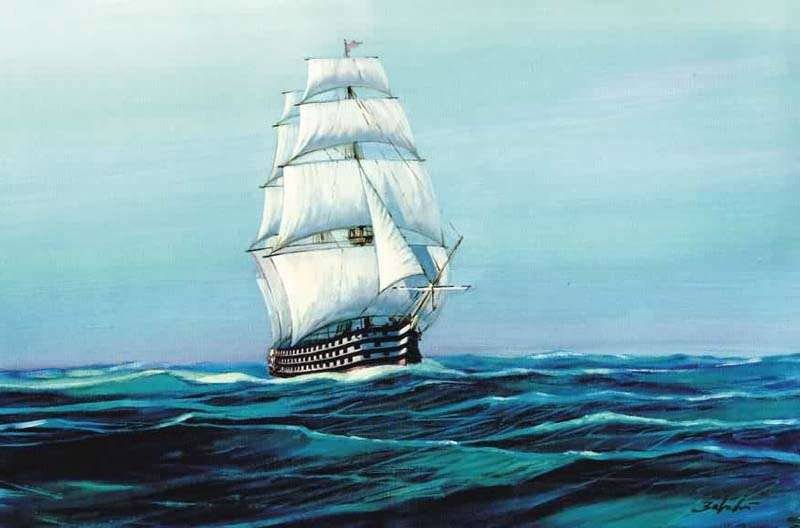
Battleship "Paris"
Information